Trees, Shrubs and Woody Vines
Media
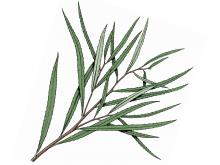
Species Types
Scientific Name
Salix interior (formerly S. exigua)
Description
Identify sandbar willow by its very narrow leaves with widely spaced, slender teeth along the margins. This is a good soil binder and bank stabilizer; it prevents washing and erosion of alluvial soil.
Media
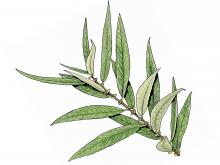
Species Types
Scientific Name
Salix caroliniana
Description
Ward's willow, or Carolina willow, is one of the first woody species to occupy the outer edges of gravel bars in a stream. Common in the Ozarks, it occurs nearly statewide.
Media

Species Types
Scientific Name
Quercus phellos
Description
Willow oak's leaves are narrow, pointed, and willowlike, and like willows, this oak is associated with wet ground. In Missouri, willow oak is only found natively in our southeastern counties.
Media

Species Types
Scientific Name
Quercus imbricaria
Description
Shingle oak got its name because the naturalist who discovered it noticed that French colonists in Illinois were using the wood to make roofing shingles. The leaves resemble those of laurel (bay), lacking lobes or teeth — but laurel trees don't bear acorns!
Media

Species Types
Scientific Name
Corylus americana
Description
American hazelnut is a thicket-forming shrub that grows to about 10 feet high. It is prized for its edible nuts, which are covered by a distinctive leafy or papery, jagged-edged bract.
Media
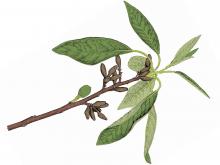
Species Types
Scientific Name
Leitneria floridana
Description
Corkwood is a rare and unusual small tree that doesn’t have a problem with having its feet wet for long periods of time, but it grows rarer as its swampy habitat is converted to cropland.
Media

Species Types
Scientific Name
Fagus grandifolia
Description
Limited in our state to well-drained, sandy soils in southeast Missouri, American beech is an impressive tree that has provided Americans with wood for a variety of uses, from furniture to toys to fuel to beer barrels!
Media
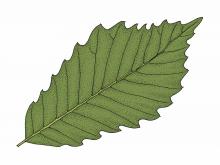
Species Types
Scientific Name
Quercus muehlenbergii
Description
Chinkapin oak is fairly easy to identify because of its distinctively toothed leaves. Look for it growing in rocky soils derived from limestone or dolomite on bluffs and in upland woods, and in floodplain forests and lower slopes along streams.
Media
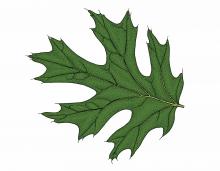
Species Types
Scientific Name
Quercus velutina
Description
Black oak grows throughout Missouri, in upland woods, on glades, and along borders of woods and fields. It and scarlet oak were the primary colonizers of Ozark pinelands when the native pines were cleared in the early 1900s.
Media

Species Types
Scientific Name
Quercus shumardii
Description
Shumard oak is worth knowing: it can rise to 100 feet in height and gain a trunk diameter of 5 feet, with wide-spreading, muscular boughs.
See Also
About Trees, Shrubs and Woody Vines in Missouri
There are no sharp dividing lines between trees, shrubs, and woody vines, or even between woody and nonwoody plants. “Wood” is a type of tissue made of cellulose and lignin that many plants develop as they mature — whether they are “woody” or not. Trees are woody plants over 13 feet tall with a single trunk. Shrubs are less than 13 feet tall, with multiple stems. Vines require support or else sprawl over the ground.





















